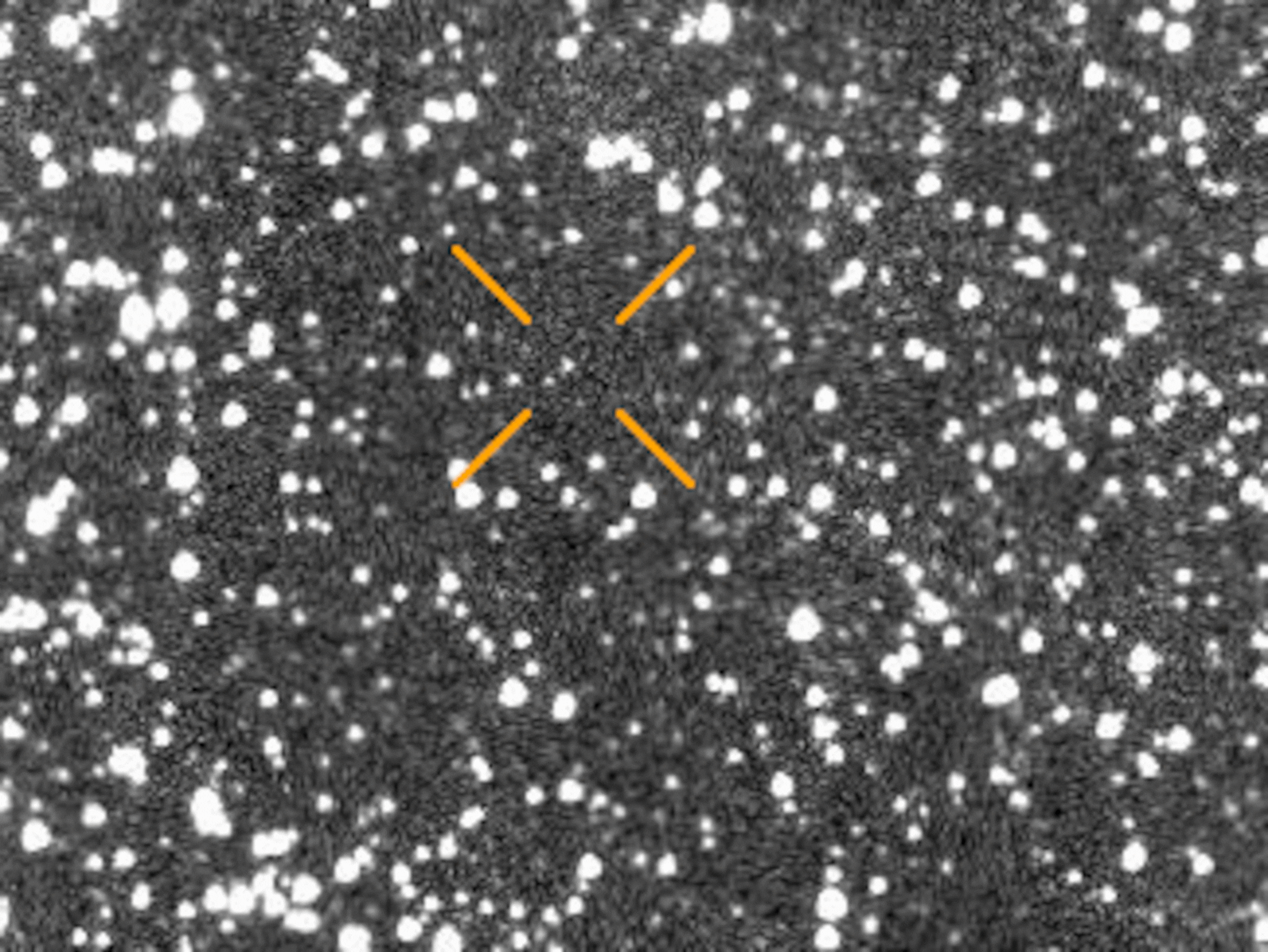
Trojan Asteroid Found Sharing Earth's Orbit—A First
Tiny companion will remain tied to our planet for at least ten thousand years, experts predict.
A tiny space rock that's partially tethered to Earth by a gravitational leash is our planet's first known Trojan asteroid, astronomers say.
Trojans are objects that exist in gravitationally stable regions in front of or behind another body, so that the two share the same orbit but never collide.
Trojan asteroids have been found around Jupiter, Neptune, and Mars, and Saturn is orbited by a few groups of Trojan moons. (See "'Dead Zone' Asteroid Found Following Neptune.")
Earth's newfound Trojan is about 1,000 feet (300 meters) wide and sits about 50 million miles (80 million kilometers) in front of Earth.
"It is in orbit around the sun in the same path that our orbital path is, and it is controlled partly by our gravity, but the sun's gravity controls it more," said Martin Connors, an astronomer at Athabasca University in Canada and one of the co-discoverers of the object.
Connors likens the odd asteroid to an orange held at arm's length by a person riding a Ferris wheel. In this analogy, the orange is the Trojan, the person is Earth, and the Ferris wheel is our orbit around the sun.
"The orange would be going around the Ferris wheel, but maintaining it out at arm's length is up to you," Connors explained.
"This Trojan is like that: There's a main thing that's dragging it around, which is the sun's gravity, but the Earth does have some control over it as well. If the Earth's gravity wasn't there, it would go off on a different course, just like if you were to let go of the orange, it would fall to the ground."
(See a picture of a Trojan moon.)
More Earth Trojans Yet to Be Spotted?
Scientists had long predicted that Earth should have Trojans, but such asteroids hadn't been spotted until now because they tend to be relatively small and to lie in the general direction of the sun as seen from Earth, making them hard to spot in the star's glare.
Fortunately, the newfound Trojan's orbit takes it far enough away from the sun for telescopes to spot.
Connors and his team spotted the rocky escort, dubbed 2010 TK7, using NASA's Wide-Field Infrared Survey Explorer, or WISE, space telescope. The team later confirmed the find with the Canada-France-Hawaii Telescope on Mauna Kea in Hawaii.
It's unknown how or when Earth and the asteroid coupled in the first place, but computer models suggests the Trojan's orbit will be stable for at least another ten thousand years.
Despite being relatively close to Earth, 2010 TK7 is not a good candidate for future robotic or human exploration, the scientists added. (Related: "NASA Asteroid Mission Set for 2016.")
That's because the asteroid follows an unusual tilted path in relation to Earth's, so it's either too far above or below the plane of our planet's orbit. In this configuration, getting to the Trojan would require large amounts of fuel.
However, there may be more conveniently located Earth Trojans that have yet to be discovered, Connors said.
"Among Jupiter's Trojan asteroids, some of them are nearly in the plane of Jupiter," he said.
"If we can find similar things for Earth, then they would be pretty low-energy targets to get to, and that would be an interesting opportunity to have."
Earth's first Trojan asteroid is described in the July 28 issue of the journal Nature.





